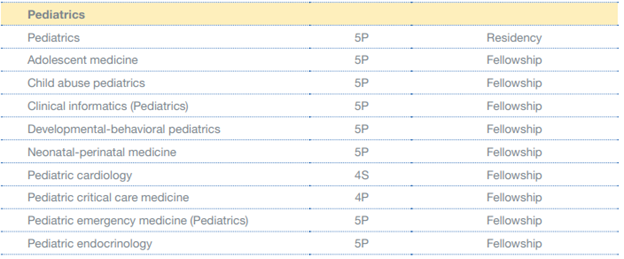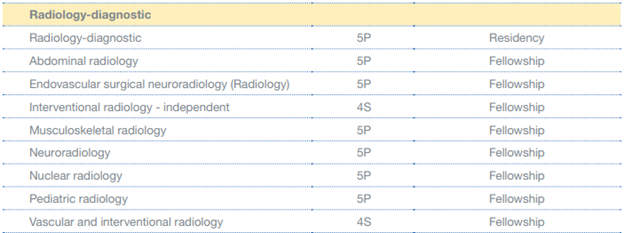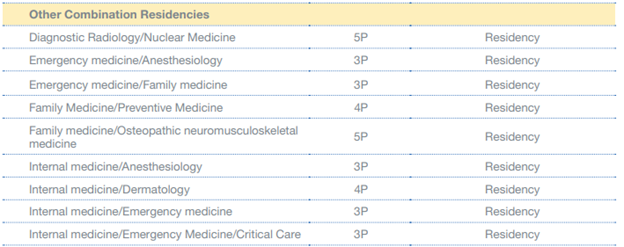The exact American Council of Graduate Medical Education specialty and/or sub-specialty for each applicant is required on all GME applications.
The Standard's GME Specialty-to-Occupation-Class Map provides occupation classes for all specialties and sub-specialties approved by ACGME. You won't need to ask your applicant for physician duties because they're known for each specialty and sub-specialty. We'll review and adjust the guide each year as new specialties are approved.
Finding the correct medical specialty or sub-specialty for your resident or fellow is easy. And if you're not 100% sure, ask your applicant! Today's medical specialties and sub-specialties can be complex, but your residents know their specialties.
It is critically important that brokers use the correct ACGME medical specialty or sub-specialty on GME applications — paper applications or eApp.
Using eApp to find medical specialties and sub-specialties
We designed eApp so you can easily find the correct medical specialty and sub-specialty for each of your applicants. First, use the Medical Field drop-down list to select your applicant's area of study. By selecting the medical field, the specialties displayed in the Specialty or Sub-Specialty drop-down list will be narrowed down to fewer options. Your selections will determine the occupation class that will be pre-populated in the application.

Example 1: Anesthesiologist resident who isn't studying a specialty. Using the eApp Medical Specialty drop-down list, select Anesthesiology. Then select the first option, Anesthesiology, from the Specialty or Sub-Specialty list. There are many specialties for anesthesiology, but some physicians will pursue just the practice of anesthesiology. Once you complete these steps, the specialty title and occupation class for Anesthesiology will be pre-populated on the application.

Example 2: A fellow in an Interventional Cardiology program. Using the eApp Medical Field drop-down list, select Internal Medicine. Then select Interventional Cardiology from the Specialty or Sub-Specialty list. Once you complete these steps, the specialty title and occupation class for Interventional Cardiology program will be pre-populated on the application.

Example 3: A resident in a combination program of Pediatrics/Psychiatry/Child-adolescent psychiatry. Combination residencies are gaining popularity and offer physicians a direct path to completing all desired medical education and credentialing. Using the eApp Medical Field drop-down list, select Other Combination Residencies. Then select Pediatrics/Psychiatry/Child-adolescent psychiatry in the Specialty or Sub-Specialty list. Once you complete these steps, the specialty title and occupation class for combination program of Pediatrics/Psychology/Child-adolescent psychology program will be pre-populated on the application.

Example 4: On the rare occasion that you have an approved non-ACGME fellowship applicant, use the eApp Medical Field drop-down list to select Non-ACGME Fellowship - MD or DO only. Then select Manual Input Field in the Specialty or Sub-Specialty list. Lastly, input the name of the program in the Other field. Once you complete these steps, the specialty name will be pre-populated on the application. You'll need to add the appropriate occupation class.

For Paper Applications: The Standard's GME Specialty-to-Occupation-Class Map
The Standard requires accurate medical specialties and sub-specialties on all GME applications. The Standard's GME Specialty-to-Occupation-Class Map will help you find the correct specialties — and corresponding occupation classes — for your applicants. It lists all current specialties and sub-specialties approved by the ACGME. All specialties at your GME institution are in the guide. However, no GME programs have all specialties.
To use the guide, start by finding the medical field associated with your applicant's specialty. Medical fields are indicated with yellow shading. It may seem a little overwhelming at first, but you'll quickly learn to identify your GME program's medical specialties and use the correct specialty titles on the application.
Example 1: A fellow in a Pediatric endocrinology program. Scroll down the list to find the Pediatrics medical field. Then continue scrolling to find the medical specialty of Pediatric endocrinology. Follow across the row to confirm that it's a fellowship program and note the occupation class of 5P. On page one of the GME application, enter 5P in the occupation class field and the specialty or sub-specialty, Pediatric endocrinology, in the box titled Current Specialty or Sub-Specialty.

Example 2: A fellow in a Vascular and interventional radiology program. Scroll down the list to find the Radiology medical field. Then continue scrolling to find the medical specialty of Vascular and interventional radiology. Follow across the row to confirm that this is a fellowship program and note the occupation class of 4S. On page one of the GME application, enter 4S in the occupation class field and the name of the program, Vascular and interventional radiology, in the box titled Current Specialty or Sub-Specialty.

Example 3: A resident in a combination program of Internal medicine/Emergency Medicine/Critical Care. Scroll down the list to find the Other Combination Residencies medical field. Then continue scrolling to find the medical specialty of Internal medicine/Emergency Medicine/Critical Care. Follow across the row to confirm that this is a residency program and note the occupation class of 3P. On page one of the GME application, enter 3P in the occupation class field and the name of the program, Internal medicine/Emergency Medicine/Critical Care, in the box titled Current Specialty or Sub-Specialty.

If you need help finding the appropriate program name for your resident or fellow, contact your regional director or the GSI team at The Standard. We're happy to help.



